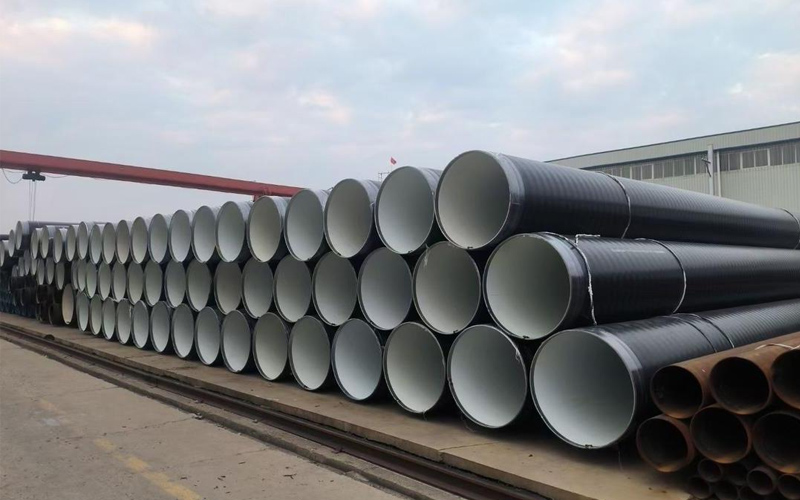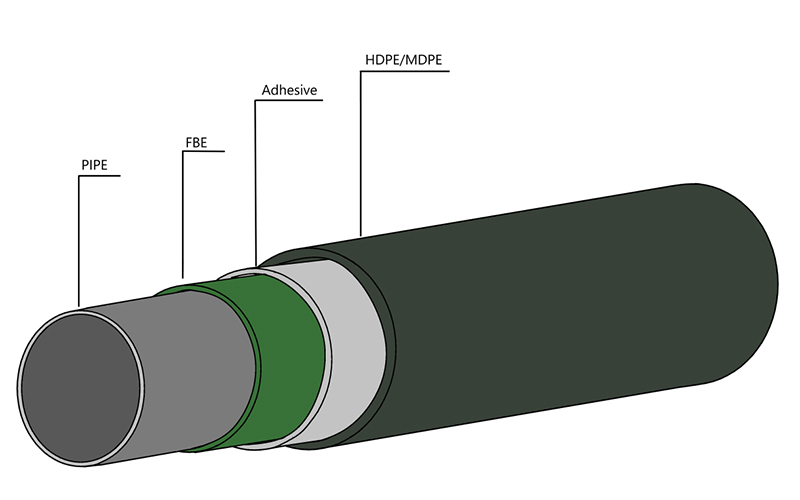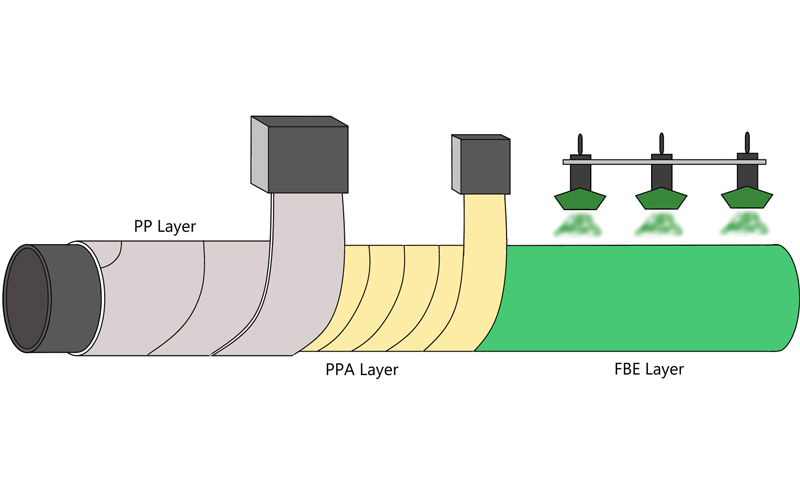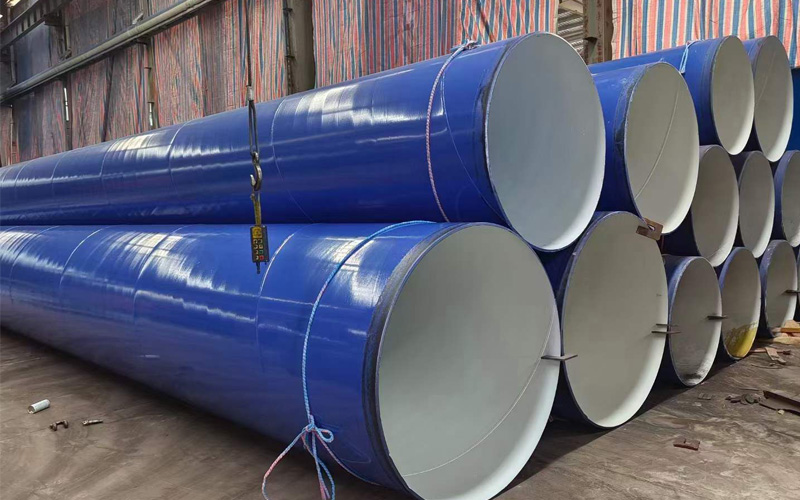API 5L LSAW Pipe: A Deep Dive into PSL1 vs. PSL2
Introduction
In the challenging complex world of oil and gas, the health of your pipeline infrastructure is key. API 5L (American Petroleum Institute) is the most widely accepted spec by any industry that could provide it in steel pipe for the transportation of natural gas and petroleum products. Of the many welding processes being used for the production of pipes, LSAW STEEL PIPE is the one that is widely used as it produces quality and low cost pipes perfect for high pressure and long pipelines in transporting hydrocarbons from the production areas to the area of consumption.
This article gives all the needed information on this product specification, including differences between PSL1 and PSL2 and why the LSAW steel pipe is an ideal option for large energy projects.
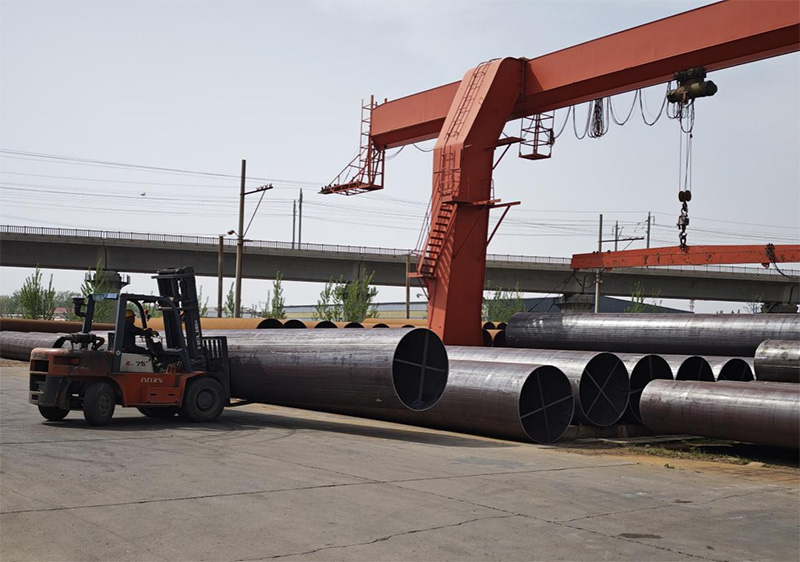
Overview of the API 5L Standard
What is the API 5L Standard?
The API 5L specification was designed primarily for transportation of gas and oil in the natural gas and oil industries. Seamless and welded steel line pipe It stipulates the requirements for material and manufacturing, testing and inspection methods and product analysis, testing, and inspection length. 1 Scope of application This standard has been prepared with the general objective of promoting the safety, reliability and operational integrity of pipelines, typically operating in remote and difficult terrains.
Significance for Pipeline Projects
Complying with standard of the API 5L becomes nothing but a necessity as the products is also a stand of quality. For project managers, engineers and procurement personnel, it is crucial to ensure that the accepted pipe material and fittings are used for a specific project based on observed correlation of strength, corrosion resistance and fabrication requirements. The standard is divided into two product specification levels (PSL) PSL1 and PSL2, which define different grades of gas and oil steel quality as well as the testing requirements.
PSL1 vs. PSL2: A Detailed Comparison
The most significant distinction within the API 5L standard is the classification into PSL1 and PSL2. even though both are used for oil and gas pipelines. PSL2 is a higher quality level and is more stringent, thus required for high pressure or sour service or critical applications .
Let’s break down the key differences.
1. Chemical Composition
The chemical properties of the steel are fundamental to its performance. PSL2 imposes stricter limits on chemical composition to enhance the pipe’s strength and weldability while reducing impurities.
. Carbon (C): The maximum carbon content of PSL2 has a ceiling on lower C. This lowers hardness, improves weldability — and raises the yield strength.
. Sulfur (S) and Phosphorus (P): PSL2 have higher restriction of S and P. Reduced sulfur and phosphorus content enhances the steel’s effectiveness and endows it with greater resistance to brittle fracture.
. Carbon Equivalent (CE): Maximum Carbon Equivalent required PLS2 Pipe which is a practical standard to identify the weld ability of the steel material. Most PSL1 grades do not have this requirement
2. Mechanical Properties
Mechanical properties determine how the pipe behaves under stress. PSL2 has more demanding requirements to ensure superior performance under high pressure and strain.
. Yield and Tensile Strength: The dropout and tensile strengths are specified for PSL1 and PSL2, there is a (approx) maximum strength requirement in PSL2. This “range of strength” avoids the problem of the material becoming too brittle for predictable performance.
. Fracture Toughness: This is a major differentiator. Charpy impact testing (a measure of a material’s fracture toughness) is required by all PSL2 grades and carries an impact performance level specification to determine against crack propagation in cold temperatures or under impact. This test is not required for PSL1 and shall be only applied if specified by the purchase order.
3. Testing & NDT Requirements
The inspection and testing protocols for PSL2 are far more rigorous, reflecting its use in critical applications.
. Non Destructive Testing (NDT): With PSL2 pipe, the use of NDT is mandatory and has to be conducted (on pipe body and, strike bar not impact bar; see 12.8.3). For PSL1, it is not always compulsoy and is at the purchaser’s option.
. Hydrostatic Testing (Inspection): No matter PSL 1 or PSL 2 all pipes must have hydrostatic testing to test for leaks, but it is only required for PSL2 that this testing be done to a higher standard with stricter requirements and documentation.
. Traceability: PSL2 pipes require some traceability that PSL1 pipes do not even though traceability is through the document transfer rather than steel consistency. “By doing that you are maintain total accountability and quality control.
4. Quality Requirements
Overall quality control and manufacturing processes are more tightly controlled for PSL2.
. Weld Repair: PSL2 prohibits repairs to the pipe body and weld seam; PSL1 does not allow repairs to the weld seam and pipe body for the welds, except when the tests have been performed at the mill.
. Sourcing: The tight requirements for chemical and mechanical quality of PSL2 often imply that the steel has to be source from an other steel mill than the mill where the pipe is produced.
In summary, PSL1 provides a standard quality level for general-use line pipe, while PSL2 delivers a higher-grade product with superior chemical purity, mechanical reliability, and proven toughness, making it essential for sour service, high-pressure, and offshore pipelines.
Application of LSAW Steel Pipe under API 5L
Why LSAW for API 5L Projects?
Longitudinal Submerged Arc Welded (LSAW) pipe is a natural fit for projects demanding compliance with the API 5L standard, especially for higher grades and PSL2 requirements. The LSAW manufacturing process involves forming steel plates into a cylindrical shape and then welding the single longitudinal seam using submerged arc welding.
This method offers several key advantages:
. Large Diameters and Thick Walls: LSAW is one of the few methods capable of producing very large-diameter pipes (up to 64 inches or 1626 mm) with extremely thick walls, This is largely achieved through advanced manufacturing techniques like the JCOE process, making it essential for high-volume, high-pressure transmission.
. High Strength and Uniformity: The process allows for the use of high-strength steel plates and produces a uniform, high-quality weld seam, ensuring consistent mechanical properties along the pipe’s length.
. Excellent Dimensional Accuracy: LSAW pipes have excellent straightness, roundness, and dimensional control, which is critical for field welding and installation.
These characteristics make LSAW steel pipe the ideal material for:
. Long-Distance Oil and Gas Transmission Lines: Where large volumes need to be transported efficiently and safely over thousands of kilometers.
. Offshore Pipelines: Where pipes must withstand immense external pressure, corrosive seawater, and dynamic loads.
. High-Pressure Gas Storage and Transportation: Including compressor stations and main artery pipelines requiring maximum integrity.
Frequently Asked Questions (FAQ)
1. What does API 5L stand for?
API 5L (American Petroleum Institute)Specification 5L Is The Standard Specification For Seamless And Welded Steel Line Pipe For Pipeline Transportation Systems; It Contains 2 Product Specifications Levels PSL 1 And PSL 2.
2. What is the difference between PSL1 and PSL2?
The difference is largely in the strictness with which it is done. PSL2 contains more chemical, mechanical properties, and testing requirements, and has stricter quality control. It is applicable to rather high-pressure and sour service than SIM PSL1.
3. API 5L nominal wall LSAW (LONGITUDINAL SUBMERGED ARC WELDED) pipe LSAW pipe is one kind of SAW pipes, it is SAW welding process which is to see the pipes longitudinally.
Such an LSAW steel pipe is well received by the API 5L, as a result of the application of LSAW shape, maintenance of uniform high-quality all through the pipe body, an ease of changing the bent shape in pipes and a reduction in the amount of weld bead.
4. Are PSL1 pipes suitable for high pressure applications?
Not necessarily, PSL1 pipes are for common, passel less application. High pressure and critical service pipelines, particularly those governed by tough safety codes, nearly always require PSL2 pipe for the preparation of PSL2 pipes that are supplied with higher durability and more stringent quality controls.
5. Which are grades under API 5L? Frequent grades are indicated by their minimum yield strength in PSI (or MPa). Common grades are API 5L GR A, GR B, X42, X46, X52, X56, X60, X65, X70. Higher grades such as X80 and above are available for more specialized, high-strength applications.
Conclusion
It is important for any one involved in a pipeline project to understand the detailed provisions of the API 5L standard. The distinction between PSL1 and PSL2 is very clear applying to the steel pipe, PSL1 is a standard quality for line pipe where PSL2 contains additional chemical, mechanical properties, and testing requirements. While PSL1 satisfies the, PSL2 delivers the extra mechanical properties, the additional requirements, the tight range of tolerance, and the additional testing for critical applications in conditions of environments.
With the strength and flexibility of LSAW steel pipe, these pipes are designed to withstand wear and tear, thus extending their life expectancy—a standard of quality upheld by allland steel pipe—moving energy safely and efficiently around the world.
Get Your Custom Steel Pipe Quote Today!
Provide us with your project details (like application, specifications, quantity). Our experienced team will respond with a tailored solution and competitive quote within 24 business hours.
Related Articles
ASTM A53 vs. API 5L: A Guide to Selection and Application
Introduction:Technology differences determine success or failure, and selection needs to be “precise”
Steel Density Analysis: Core Differences between Mild and Medium Carbon Steels and Industrial Applications
3LPE coated steel pipe: a solid barrier in the field of industrial corrosion protection
3LPP coated pipe: anti-corrosion guard in high temperature and high pressure environment
FBE steel pipe: the technological armor of the steel defense line
HOT TAGS
latest posts
- How LSAW/SSAW Steel Pipes Ensure Safe & Durable Drinking Water Pipelines
- LSAW steel pipe vs ERW steel pipe: Unveiling Core Process Differences in Steel Pipe Welding from Arc to Current
- The Essential Guide to High Pressure Pipe Applications
- API 5L Grades Explained: X52, X65 & X70 Meaning?
- A Guide to Offshore Steel Pipe & Tubes for Subsea Projects











